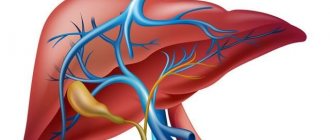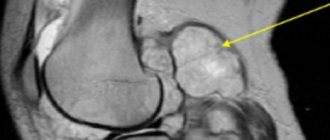Ultrasound of cerebral vessels is an absolutely painless technique that helps to identify possible pathological processes. It has been scientifically proven that ultrasonic waves do not have a negative effect on organs and tissues, therefore such manipulation can be carried out not only for diagnosis in adults, but also in children. The number of procedures and frequency of examinations are not limited - ultrasound can be performed as often as necessary. Brain examination using ultrasound is carried out both according to the doctor’s indications and at the request of the patient. Let's look at how an ultrasound is performed and how to properly prepare for it.
In what cases is ultrasound of the brain prescribed?
Of course, you can undergo the examination without any complaints. But there are a number of symptoms that indicate that the procedure should not be postponed.
Be sure to consult your doctor if any of the following concerns you:
- Constant feeling of drowsiness and weakness;
- Dizziness, darkening of the eyes with a sharp rise;
- Noise in ears;
- Regular headaches or headaches that occur in the morning;
- Flashing “flies” before the eyes;
- Difficulty in perceiving information (reading or listening);
- Problems paying attention or remembering;
- Blood pressure surges;
- Episodes of incoordination;
- Apathy or low mood;
- Unreasonable nausea and vomiting;
- Deterioration of vision or hearing.
For preventive purposes, ultrasound is also indicated for those people who have high cholesterol or blood sugar levels, as well as people suffering from obesity, the elderly and those who have previously suffered a heart attack or stroke.
Sometimes ultrasound of cerebral vessels is prescribed before an upcoming operation, for example, if tumors in the head area are to be removed.
Types of ultrasound of cerebral vessels
Various techniques can be used to study cerebral vessels:
Doppler ultrasound
- used to assess blood flow in vessels, allowing to identify its nature and speed.
Duplex ultrasound.
This technique is a variation of the technique described above. Duplex examination allows you to visualize blood vessels, assess their condition, identify blood clots, plaques, aneurysms and other pathological processes. During this technique, the direction and speed of blood flow are also determined.
Triplex ultrasound.
With its help, an image of the arteries is obtained, colored in different shades, depending on the direction and speed of blood movement. The ophthalmologist can also set other parameters for staining - this opportunity is provided by a computer program. Ultrasound of cerebral vessels using triplex scanning allows you to obtain maximum information about the state of the circulatory system.
Each method has its own advantages and disadvantages. Which diagnostic technology will be chosen is determined by the specialist, depending on what parameters are important to him for diagnosis.
Ultrasound of head and neck vessels
Ultrasound of the vessels of the neck and head is one of the most accessible and effective methods for diagnosing diseases such as atherosclerosis and thrombosis. The examination allows you to assess the condition of the arterial and venous branches and lymph nodes, measure the speed of blood flow and other parameters. Medical invites patients to undergo ultrasound diagnostics using new generation devices. An informative and safe examination will allow timely detection of vascular pathologies and initiation of treatment.
Indications for ultrasound examination of the vessels of the neck and head
An examination is prescribed if the patient notes the following symptoms:
- recurrent headaches, migraines;
- fainting conditions;
- dizziness not associated with hunger or fatigue;
- feeling of heaviness in the head in the morning after waking up;
- sleep disorders, insomnia;
- noise or congestion in the ears;
- sudden deterioration of vision;
- decreased concentration, memory problems;
- impaired coordination of movements;
- chronic fatigue, etc.
In addition, ultrasound examination of the vessels of the neck and head is carried out for such diagnoses and conditions as:
- traumatic brain injuries;
- stroke or heart attack;
- ischemic disease;
- hypertension;
- arrhythmia, angina pectoris;
- thrombosis of veins or arteries.
An ultrasound of the vessels of the neck and head will also be required if changes appear in blood tests, for example, if cholesterol levels increase. An annual examination is recommended for patients over 45 years of age. People who smoke a lot, lead a sedentary lifestyle, or work under constant stress are also at risk.
Contraindications
The procedure is quick and painless. Ultrasonic waves do not have a negative effect on the body and do not cause side effects. Thanks to these qualities, examination can be prescribed even to pregnant women and newborn children. The only limitation for diagnostics may be severe damage to the skin in the area of contact with the ultrasound equipment sensor.
Preparation for ultrasound of the vessels of the head and neck
Before undergoing the examination, the patient is recommended to consult with the attending physician. The specialist will most likely stop taking certain medications that may affect the functioning of blood vessels and distort the picture of the disease.
If the patient is involved in professional sports or heavy physical work, then on the eve of the examination the load should be minimized.
Preparing for ultrasound diagnostics also includes giving up coffee, strong tea, energy drinks, alcohol and smoking. It is not recommended to eat before the test.
How is ultrasound of the vessels of the brain and neck performed?
The main type of instrumental diagnosis of diseases of the cervical spine is a complex of duplex and triplex scanning. It gives an idea of the characteristics of blood flow in the vessels of the neck and head (including intracranial). During diagnostics, a complete picture of soft tissues is displayed on the equipment monitor, against which veins and arteries are clearly visible. The method allows you to record the speed of blood flow in a certain area. This parameter is coded in different colors: shades of red indicate the movement of blood towards the sensor, shades of blue indicate the movement of blood away from the sensor. The study makes it possible to identify such disorders as inhibition of blood flow due to atherosclerotic plaques, thinning of vessel walls, expansion or narrowing of the lumen, inflammatory processes, vascular damage due to diabetes or hypertension, congenital anatomical abnormalities in the structure of veins and arteries, and others.
The procedure takes from 30 to 60 minutes depending on the type of ultrasound and takes place in several stages:
1
The patient takes off his outer clothing, frees his neck and collarbones from jewelry, and then lies down on the couch.
2
The doctor sets up the equipment and treats the sensor with a colorless hypoallergenic gel, which can additionally be applied to the skin in the area of study. Acoustic gel improves the conductivity of the ultrasound signal and the gliding of the scanner.
At the end of the examination, the results are deciphered and given to the patient in writing.
What does an ultrasound scan show?
During the examination, the specialist examines the main arteries that provide nutrition to the brain: common, external and internal carotid, as well as middle, anterior, posterior vertebral and basilar.
The ultrasound protocol contains a detailed description of the anatomical features of the vessels of the patient’s neck and head, data on the movement of blood flow, obstruction or deformation of veins and arteries. The examination allows you to detect the following abnormalities and pathologies:
- Atherosclerotic plaques. At the initial stage of blockage formation, a thickening of the vessel wall of up to 1.5 mm is noted. A reading greater than this value may indicate the presence of plaque.
- Thrombosis. When the disease occurs, the protein fibrin and blood cells, platelets, accumulate in certain areas of the vessels. A thrombus can partially or completely block the lumen of a vein or artery, which leads to impaired circulation, hypoxia and other dangerous consequences.
- Cerebrovascular accident. Pathology can occur as a result of thrombosis, narrowing of the diameter of arteries and veins, changes in blood flow speed, development of osteochondrosis, etc. Identifying hypoxia at an early stage will prevent the occurrence of concomitant diseases, such as stroke.
Many vascular pathologies are irreversible, so patients at risk are required to undergo an annual ultrasound of the vessels of the head and neck - you can do this at our medical center in Moscow.
Advantages of the Miracle Doctor clinic
Experienced doctors
Ultrasound diagnostics of blood vessels is carried out by specialists with extensive practical experience. The total work experience of some doctors exceeds 30 years.
Modern equipment
The clinic has new generation ultrasound machines. The equipment allows you to obtain detailed images of blood vessels without interference.
All types of ultrasound at low prices
By contacting us, you can undergo Doppler ultrasound, duplex and triplex scanning of blood vessels. Ultrasound diagnostics are performed by appointment. To get tested, make an appointment by phone. A description of the examination results is performed in front of the patient.
VIP service
You can undergo a vascular examination any day of the week without a queue. If necessary, we will schedule you for a consultation with a phlebologist or neurologist.
To find out the cost of ultrasound of the vessels of the head and neck, make an appointment and ask other questions you are interested in, call our clinic in Moscow or fill out the feedback form.
Possible contraindications
There are no contraindications to ultrasound examination of cerebral vessels. The exception is severe damage to the skin in the area being examined. In this case, the procedure can be postponed until complete healing.
Another nuance may be an allergic reaction to silicone, which is part of the contact gel. If you have already had cases of allergic reactions to silicone, be sure to notify the doctor who ordered the test and the doctor who will conduct it. A specialist may recommend taking antihistamines to reduce allergies, or purchasing another gel without silicone.
Advantages and disadvantages
The main advantage of the diagnostic procedure is its high information content and 100% safety. Since the manipulation does not imply invasiveness, it has no contraindications. The study has other benefits:
- It doesn't hurt at all;
- Ultrasound does not cause discomfort;
- The ability to study both the physical state of blood vessels and their functionality.
One of the disadvantages is the low accessibility of blood vessels in certain areas of the brain for diagnostics using ultrasound.
Indications for ultrasound examination
Ultrasound is prescribed in the presence of symptoms of diseases of internal organs and tissues. Widely used to identify benign and malignant tumors, as well as to detect metastasis of cancer cells. Ultrasound is used for preoperative examination and postoperative monitoring.
Angiology and karyology
Doppler ultrasound measures the direction and speed of blood movement and determines blood pressure. Diagnoses various heart conditions, including heart valve problems and congestive heart failure, and assesses damage after a heart attack. Cardiac ultrasound provides images of the cardiovascular system and helps measure the movement of heart tissue.
Ultrasound diagnostics allows:
- examine the walls of blood vessels;
- determine deep vein thrombosis;
- accumulations of plaques and clots;
- control tumors and congenital vascular injuries.
Sonography is used to monitor decreased, absent, or increased blood flow in various organs. Information obtained from a Doppler ultrasound image can determine whether a patient is a suitable candidate for a procedure such as angioplasty (widening of the arteries).
Emergency conditions
Used to evaluate traumatic wounds, fluid accumulation around the heart, internal bleeding, etc. Gastroenterologists use ultrasound to obtain images of the spleen, kidneys, bile ducts, gallbladder, liver, aorta, inferior vena cava, pancreas and other abdominal organs.
Sonography detects swelling or infection in the appendix area.
Pediatrics and pregnancy
Ultrasound in newborns is performed in the soft spot on the skull (fontanelle) to monitor for brain damage or abnormalities, genetic disorders, cerebrovascular disease, bleeding, hydrocephalus. Sonography is also used to examine the baby's hip and spine.
Ultrasound during pregnancy is a standard component of prenatal follow-up care. Obstetric ultrasound helps monitor the health of the child and mother.
Urology and gynecology
In urology, ultrasound helps examine the amount of urine remaining in the bladder after urination and the health of organs in the pelvic area, including the uterus and testicles. A urological ultrasound is performed to examine the kidneys or bladder for stones.
Orthopedics
Diagnoses problems with soft tissues, muscles, blood vessels, tendons and joints. Muscular skeletal sonography can be used to study connective tissue, bony surfaces, soft tissue masses, nerves, muscles and tendons.
Preparing for the study
If you want to get the most accurate results, you need to properly prepare for the upcoming test. Let's consider the most important stages of preparation:
- Since we are talking about checking blood vessels, it is important three days before the upcoming procedure to give up alcohol, energy drinks and additives that can affect the functionality of blood vessels and the speed of blood flow;
- Try to completely relax and breathe freely at the time of diagnosis;
- Do not engage in sports or physical activity for at least 2 hours before the ultrasound.
- If you are constantly taking any medications, be sure to discuss this with your doctor. If it turns out that the pills affect blood pressure and blood vessels, the doctor may stop them for a day, or postpone taking the drug to a later time;
- 3 hours before ultrasound diagnostics you need to refrain from smoking;
- Before the procedure, long hair must be collected so that nothing interferes with the examination process.
If the examination is being carried out on a child, you should prepare him mentally. Explain to your child that this procedure is completely painless and does not cause discomfort, persuade him to lie still - movements during the diagnostic process can distort the results of the study.
Where to do ultrasound duplex scanning of blood vessels
If you need to do an ultrasound scan and duplex scanning of the vessels of the head and neck in St. Petersburg, contact the medical office. Our specialists have at their disposal the latest Italian expert-class ultrasound equipment, which allows them to make a diagnosis as quickly and accurately as possible.
You can find out the price of a diagnostic test, make an appointment and find out other questions by telephone or by filling out an electronic form.
| Name of service (price list incomplete) | Price, rub.) | In installments* |
| Transcranial duplex scanning (TCDS) of cerebral vessels | 3 600 | — |
| Ultrasound scanning of brachiocephalic vessels and vertebral arteries | 3 200 | — |
| Transcranial ultrasound scanning (TCDS) of arteries and veins, brachiocephalic vessels and vertebral arteries | 6 700 | — |
* You can read more about the conditions here - Treatment on credit or in installments.
How to do an ultrasound of the brain
The person lies down on the couch, his head resting on a low pillow. The desired area of the skin is lubricated with silicone gel. In order to determine the nature and speed of blood flow, several sensors are attached to the temples.
If it is necessary to study the condition of the veins and arteries of the brain, the specialist suggests conducting Doppler sonography, during which changes in the displayed sound waves from moving blood cells are recorded. To carry out the procedure, the sensor can be localized in the forehead, back of the head or temples.
In total, the manipulation lasts no more than 40 minutes. Next, the patient receives the test results in hand and goes to the attending physician to decipher the results.
What does duplex scanning show?
When performing duplex scanning, the structure of the main vessel is studied, the diameter of its lumen is determined, possible obstacles are identified (atherosclerotic plaques, blood clots, foci of inflammation, solid, liquid or gaseous intravascular substrates, etc.). Also during the procedure, signs of arterial aneurysm, vascular spasm, impaired venous outflow and other pathological conditions may be detected. This technique allows us to assess the reserve capabilities of blood circulation and regulation of vascular tone.
Decoding the results
A neurologist interprets the results of an ultrasound examination of cerebral vessels. In order to establish an accurate diagnosis, the specialist takes into account the characteristics of the cerebral vessels and the patient’s medical history, because some changes may be an anatomical feature unrelated to pathology.
If everything is normal, the results should look like this:
- the lumen of the vessels is completely free, various neoplasms are absent;
- turbulent blood flow is not present in the branching of vessels;
- the thickness of the vascular wall is less than 0.9 mm (sometimes 0.9-1.1 mm is also a normal option);
- absence of foreign inclusions, cysts and various neoplasms.
Please note that a diagnosis cannot be made based on ultrasound alone. The disease is determined by a combination of pathological factors, which are indicated by various studies.
The essence of Doppler ultrasound
Based on the name of the procedure, it is performed using ultrasonic waves. Their work is based on the Doppler effect. The procedure differs from a standard ultrasound: a vessel with blood passing through it is displayed on the monitor screen. Looking at the resulting image, the specialist assesses the state of blood flow and vascular patency, which affects the quality of blood supply to the brain.
Dopplerography of cerebral vessels makes it possible to study the work of the veins, which “supply” blood to the brain, and the arteries, which are responsible for the outflow of waste products from it. The vessels being examined are located in the cervical and cranial regions. The type of ultrasound will depend on their location:
- Dopplerography of extracranial vessels located on the surface of the neck (jugular veins, carotid, vertebral and subclavian arteries). Any disturbances in their structure affect the state of the brain, which is why these vessels are called “maternal” vessels.
- Dopplerography of transcranial, or “daughter” vessels. The doctor installs an ultrasound sensor in the thinnest parts of the skull and evaluates the functioning of the veins and arteries that supply the brain.









